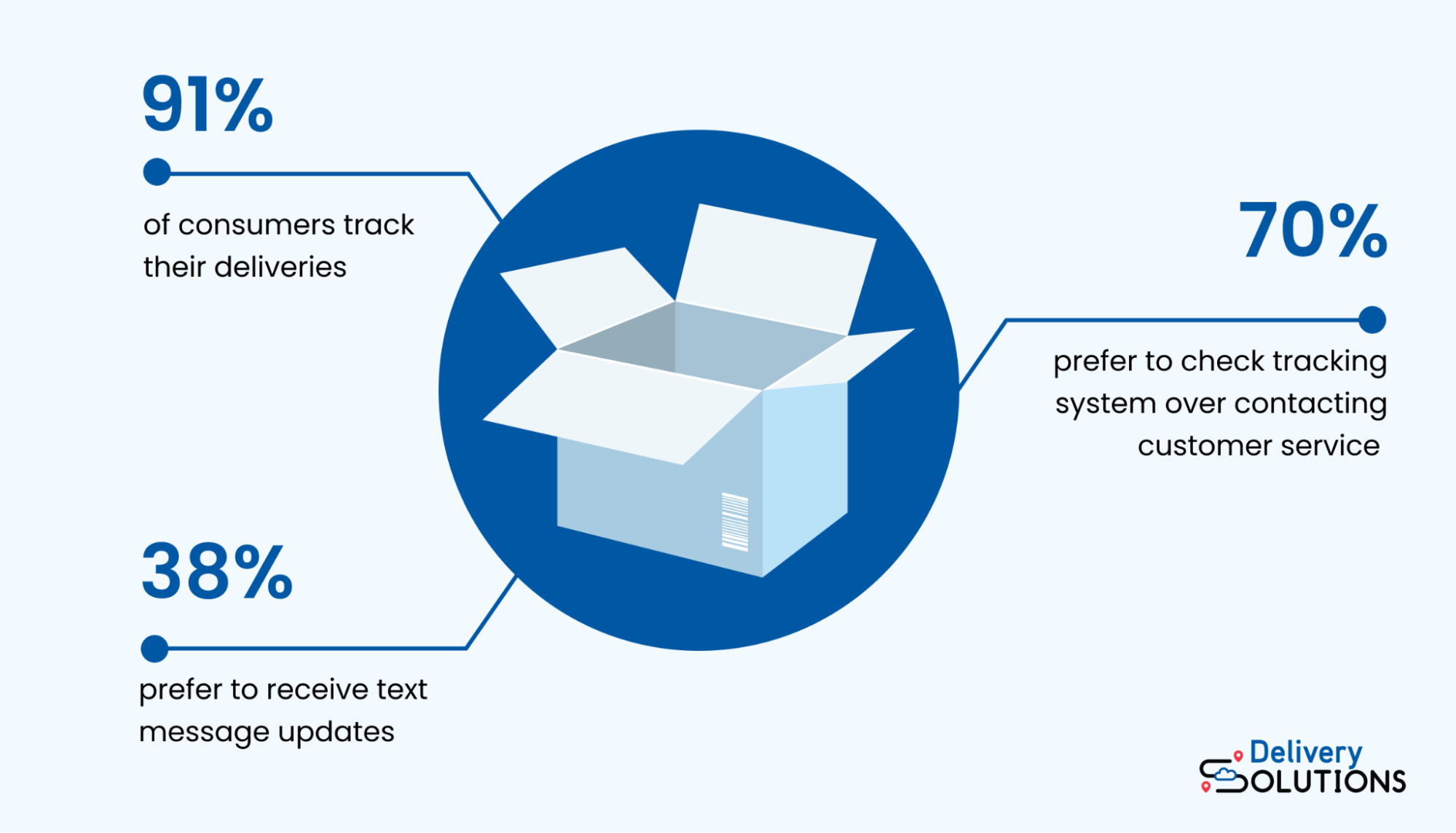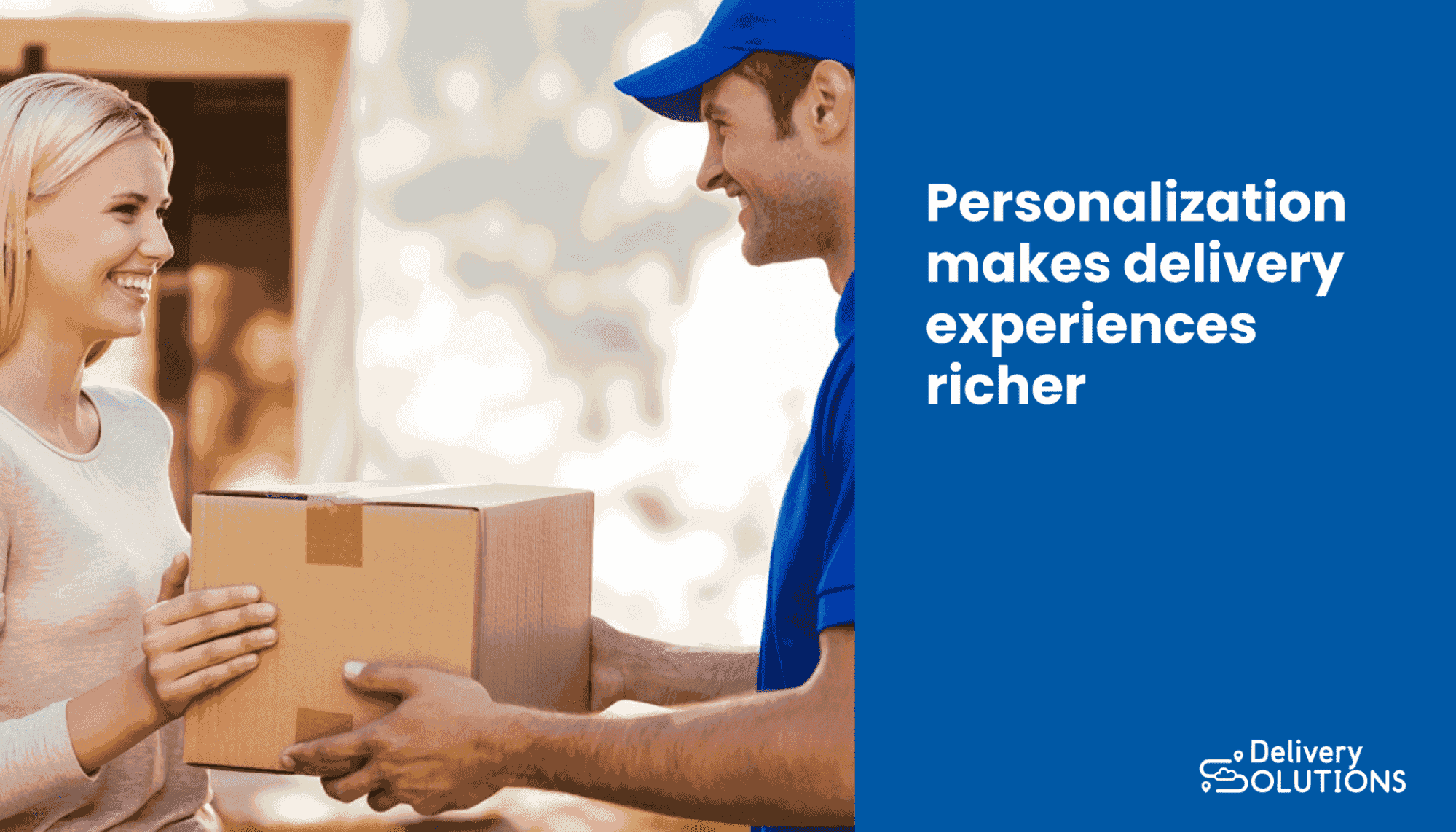The need for brand loyalty has never been more important. Companies across the world have come up with the most ingenious of ways to foster relationships with their clients and prospects. From social media engagement to personalized email marketing campaigns, companies go to great lengths to build lasting relationships with their customers.
Even so, there's one business process that continues to be ignored even though it contains crucial customer engagement potential — logistics. Companies risk great harm to their brand image by handing over their customer experience to item delivery services.
Third-party logistics services don't have a heavy emphasis on relationship building, and usually lack the transparency that modern customers demand. Most item delivery services still just give a tracking number and a link to get updates on where a package is. This opaqueness along with the fact that 75% of deliveries result in a poor customer experience creates a recipe for disaster.
The modern challenges of item delivery services
Late deliveries and process outages are a fact of business life. They're bound to happen sooner or later. They’ll bring with them a host of problems that companies could very well do without. As many as 8% of deliveries fail on the first attempt while 5% never make it to the destination. Zendesk in their CX Trends 2022 report states 61% of customers will switch to another brand after one bad experience. Another 76% will go to a competitor after more than one bad encounter.
However, you can prevent such issues by treating the logistics as part of the customer's journey and keeping them in the loop throughout. Few companies realize that buyers can forgive late deliveries so long as they are informed beforehand.
For example, Yelp found that nine out of 10 customers will overlook bad reviews if the business responds to their issues appropriately. Likewise, a survey by Intercom reported 94% of customers expected a business to inform them about a delay before they have to ask, while 79% expected to know about potential delays at checkout.

So on the one hand, logistical troubles are inevitable due to the vagaries of last mile delivery and issues that are beyond a retailer's control. On the other hand, customers today have exceedingly high expectations from retailers across all possible engagement points. They want same day delivery, greater transparency into the shipping process, and to receive timely updates about their purchases.
Moreover, most item delivery services handle logistics for multiple clients. They obviously can't offer the branded experience that individual retailers can. Logistics personalization and transparency can very well be the "last mile" in customer experience (pun intended) that sets you apart from your competitors.
While this may seem like a tall order, it also presents a decisive competitive advantage for forward thinking brands. It's hard to overstate the importance shoppers place on being recognized as individuals and not just numbers on a spreadsheet. For example, a McKinzey survey found that 72% of customers expect brands to know their needs and interests.
All these issues may seem daunting, but can be managed through properly curated tech stacks and proactive communication with customers. Modern SaaS based tools like Omnichannel Experience Management can integrate all aspects of your logistical operations via webhooks to offer one, seamless experience.
Beyond simple text updates, retailers can implement chat, real-time GPS tracking and recommend hot/trending items in the tracking screen. To the customer, the overall experience is similar to that of a food delivery app where they select, buy, and track their purchases from one interface. OXM, being a fully white-labeled service can provide your customers with a similar experience by moving their entire purchase journey to your retail portal, which can be an app or website.
Cloud-based technologies can enable such features and more through powerful integrations.
Offer more relevant, branded, and navigable post-purchase experiences
Post-purchase experience (PPX) encompasses all the ways in which you interact with your customers after they've converted. PPX includes pre and post dispatch activities. Pre-dispatch PPX uses blog posts, newsletters, and social media to drive customer engagement. Post-dispatch experience encompasses logistical follow-ups, item recommendations and new product updates.
Marketers and managers alike continue to place a great amount of emphasis on pre-dispatch PPX, while post-dispatch activities, particularly in the delivery phase, continue to lag. LinkedIn's Enlightened Technology Buyer report reaffirms this disconnect.
During the needs assessment phase, 72% of decision makers engaged with vendors vs 2% during renewals. In other words, there's a massive gap between pre and post sale engagement. We might even call the post-purchase experience the greatest opportunity for competitive differentiation.

Self-service delivery tracking
Part of offering seamless experiences to customers includes making all expected actions as accessible as possible. Sadly, 56% of ecommerce platforms still require customers to track their order delivery on their logistics provider's website, which is unnecessary. Onsite order tracking can be implemented via webhooks, which are communication apps that relay messages between platforms such as an item delivery service and your website.
Proactive issue notification
Being one step ahead of the complications, communicating with customers, and fixing issues that arise quickly can result in higher customer satisfaction than many realize. This phenomenon is known as the Service Recovery Paradox where customers think more highly of a company which corrected a problem compared to how they'd regard the brand if it provided a completely issue-free service.
Business alerts as those offered by Delivery Solutions can trigger issue notifications if certain conditions aren't met. These can in-turn be used by your customer relationship team, and logistics provider to both predict and fix issues that may or do arise.
Customized delivery experiences
Same-day delivery and curbside pickups are becoming the norm these days. To stand out, retailers need to make their item delivery service more customizable. Branded labels, boxes and messages can be included in your packaging to make the experience more memorable for the customer. But we can go further than that. Multiple stores can have their own branding relevant to their market, and region.
Create brand loyalty by giving customers more delivery options
Consumer expectations about both their pre and post-sale experience are constantly evolving. It wasn't long ago when people were content with receiving packages at their homes or commercial spaces in 2 to 4 business days. But Amazon's aggressive and innovative delivery model changed all that. Same day, one-day, two-day, in-transit item redirection, curbside and guaranteed delivery became standard practice for shipping companies. More so, customers started expecting all retailers to offer multi-option shipping methods, a trend that greatly accelerated during and after the COVID-19 pandemic.
Giving customers control over their delivery experience with BOPA
BOPA or Buy Online, Pickup Anywhere is a relatively new idea but is quickly gaining traction. It offers an affordable, reliable and secure way of delivering packages by giving customers greater autonomy over the last mile phase of a delivery process.
Besides making the delivery experience more convenient, BOPA also helps lower costs, shorten delivery times, and reduce the carbon footprint. Early reports show that BOPA is well received with 18% of customers opting for an alternative delivery location if given the option.
Harnessing the customer's knowledge of their areas to make deliveries faster
Part of making logistics more transparent is enabling two-way communication between the item delivery service and the customer. Most retailers send status updates, time estimates, delay notifications, or changes in delivery options via text messages. But, they can do more.
While it's the retailer's job to get a product to the destination in time, the customer has a better knowledge of their area. Email, live chat, messenger apps, chatbots, and social media can be used here. A good example here are WhatsApp chatbots that can automate a lot of customer service queries. Customers can update shipping locations, track their packages, state or change last mile preferences, issue new delivery instructions, and do much more from a familiar interface.
Implement a holistic delivery experience
Integrating different delivery methods and communication technologies into one cohesive experience presents a (very costly) challenge for most retailers. Disconnected data sources, inaccurate inventory tracking, unpredictable delivery routes, managing different carriers, and unexpected delays, can prove very overwhelming for even seasoned players.
OXM offers all the tools you may need to stitch all aspects of your logistics operations with your tech stack. Besides making the customer’s journey more enjoyable you can also free up valuable call center, PR and customer support resources. Your customers can communicate directly with the delivery service to guide them to the destination, shortening delivery times considerably.
Ryan Caldarone
Ryan is a Sr. Digital Marketing Manager with over ten years of experience in B2B eCommerce, specializing in brand storytelling and content. Having contributed to hundreds of creative projects for SMBs and startups across the tech, energy, and fine arts sectors, Ryan brings diverse perspectives.
Topics from this blog: Delivery
